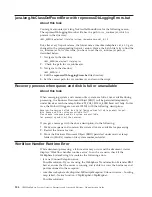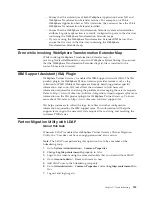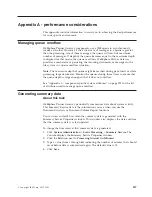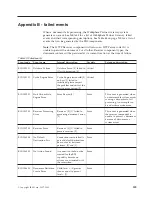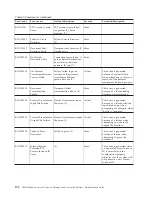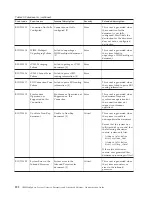
2.
Ports numbers lower than 1024 are privileged ports which are reserved for root.
Unless your system has been configured to specially handle this restriction,
non-root users will not be able to bind to those ports. WebSphere Partner
Gateway uses the non-root user, WebSphere Partner Gateway user, to start
components, but it cannot bind to privileged ports. The bcguser is an example
of WebSphere Partner Gateway user.
Note:
For WebSphere Partner Gateway, non-root users start the Receiver, but
cannot bind to privileged ports.
Change the Receiver ports to available ports (that is, ports not used by other
applications) and larger than 1024. The following example shows how to change
port 80 to
nnn
.
1.
Stop the Receiver.
2.
Find and replace port number 80 to
nnn
in the following files:
Note:
Backup all files before editing.
a.
Under
<
Installed_path
>bcghub/was/profiles/bcgreceiver
, edit the
following files:
1)
config\cells\DefaultNode\virtualhosts.xml
2)
config\cells\DefaultNode\nodes\DefaultNode\serverindex.xml
3)
config\templates\servertypes\APPLICATION_SERVER\serverindex.xml
4)
installedFilters\wlm\bcgreceiver\target.xml
5)
logs\portdef.props
b.
Edit
<
Installed_path
>\bcghub\receiver\lib\config\
bcg_receiver.properties
.
Note:
The port number can also be changed using the WebSphere Application
Server Admin Console by going to
Server > Ports
page and changing the port
for
WC_defaulthost
.
3.
Start the Receiver.
4.
Type the Receiver URL in your browser to ensure Receiver works,
http://<
host_name
>:xyz/bcgreceiver
, The correct result is that browser should
report
″
Unsupported Operation
″
. If instead, the browser reported
″
The page
cannot be displayed
″
, the Receiver did not successfully bind to the port.
CA certificate expiration
Only the certificates that are used for encryption, signature, and SSL client are
disabled when they expire. The CA certificate is not disabled when it expires, but it
is not used at runtime.
If the root or intermediate certificates expire between server restarts, those
certificates are not included in the list of trusted certificates. Therefore, if the
certpath build fails because the CA certificate is not found, a possible cause can be
that the CA certificate has expired.
If a root or intermediate certificate expires in runtime, the certpath build fails and
the corresponding encryption, digital signature or SSL certificates is not used in the
business transaction.
Chapter 17. Troubleshooting
177
Summary of Contents for E02HRLL-G - WebSphere Partner Gateway...
Page 20: ...14 IBM WebSphere Partner Gateway Enterprise and Advanced Editions Administration Guide...
Page 66: ...60 IBM WebSphere Partner Gateway Enterprise and Advanced Editions Administration Guide...
Page 80: ...74 IBM WebSphere Partner Gateway Enterprise and Advanced Editions Administration Guide...
Page 86: ...80 IBM WebSphere Partner Gateway Enterprise and Advanced Editions Administration Guide...
Page 90: ...84 IBM WebSphere Partner Gateway Enterprise and Advanced Editions Administration Guide...
Page 134: ...128 IBM WebSphere Partner Gateway Enterprise and Advanced Editions Administration Guide...
Page 154: ...148 IBM WebSphere Partner Gateway Enterprise and Advanced Editions Administration Guide...
Page 194: ...188 IBM WebSphere Partner Gateway Enterprise and Advanced Editions Administration Guide...
Page 228: ...222 IBM WebSphere Partner Gateway Enterprise and Advanced Editions Administration Guide...
Page 258: ...252 IBM WebSphere Partner Gateway Enterprise and Advanced Editions Administration Guide...
Page 267: ......
Page 268: ...Printed in USA...






















